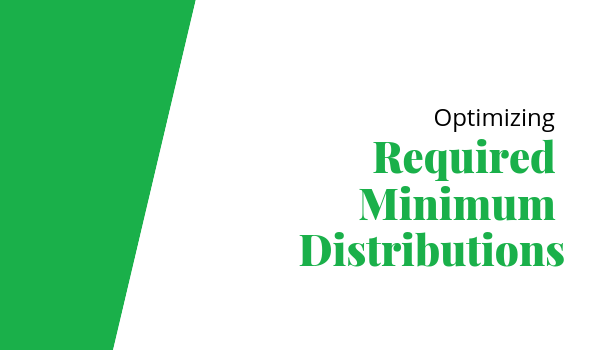Required Minimum Distributions (RMD) are always a hot button with brokers and clients, especially recently when Donald Trump asked the Treasury Department to examine RMD life expectancy and distribution tables due to longer life expectancy and more people working well into their 70’s. Nevertheless, RMDs “are what they are”, a required distribution that every individual who turns 70.5 must start taking from their IRAs. At its simplest level, an RMD will be withdrawn and either deposited into a client’s checking account or reinvested. Let’s look at other ways to utilize an RMD.

An Opportunity
RMDs, thoughtfully redirected, offer clients an opportunity to do more than just leave their money sitting, earning minimal interest or none. Leveling an RMD payment, using a lifetime income rider on a fixed or index annuity, is one way to protect the client’s RMD while also guaranteeing that the payment will never run out during their lifetime.
Guaranteed lifetime income riders have become attractive to buyers over the past decade. Insurance carriers continue to be innovative, guaranteeing credits of up to 10% each year that payments are deferred. This means if a client purchases an income rider at age 65 and defers payments to age 70, they could receive an 8.5% to 9% cash flow, guaranteed for life.
So how does this help, other than giving the client a predictable lifetime payment? At age 70, the RMD withdrawal is 3.65% while at age 75, it is 4.37%. With an 8.5% to 9% cash flow, there’s sure to be excess income. IRA RMD rules allow aggregation of all IRA accounts, meaning the client can take their RMD from IRA # 1 while IRA # 2 remains untouched. This is true if the distributed amount from IRA #1 meets the total RMD for both accounts. This strategy can be advantageous where IRA # 2 is the more aggressive growth portion of the client’s asset that they do not want to touch. Whatever the reason, generating the excess income is beneficial and can be used to satisfy the RMDs for all the client’s IRA accounts.
But, what if the client doesn’t need the RMD? What if their current income from social security, a pension payment, or other sources is more than they need to live comfortably?
Deferring RMDs Past Age 70 1/2
In 2014, the U.S. Department of Treasury passed guidelines around RMDs that went mostly unnoticed. The guidelines state that a portion of a client’s RMDs can be deferred past age 70.5, up to age 85, using a Qualified Longevity Annuity Contract (QLAC). Up to $130,000, or 25% of IRA assets (whichever is less), can be put into a Deferred Income Annuity with the QLAC tax status. This not only defers the RMD payments but can give much-needed income in later years, especially for those clients that do not have non-qualified assets to use for income past age 70. And because there is a death benefit equal to the initial deposit less withdrawals, a beneficiary is guaranteed to receive the principal if the client passes away before the account is fully distributed.
Optimizing RMDs should be at the forefront for any broker that deals with qualified assets. It is an opportunity to help their clients achieve greater financial flexibility and peace of mind. Fixed and indexed annuities are some of the only financial instruments available to help optimize distributions for qualified accounts.
